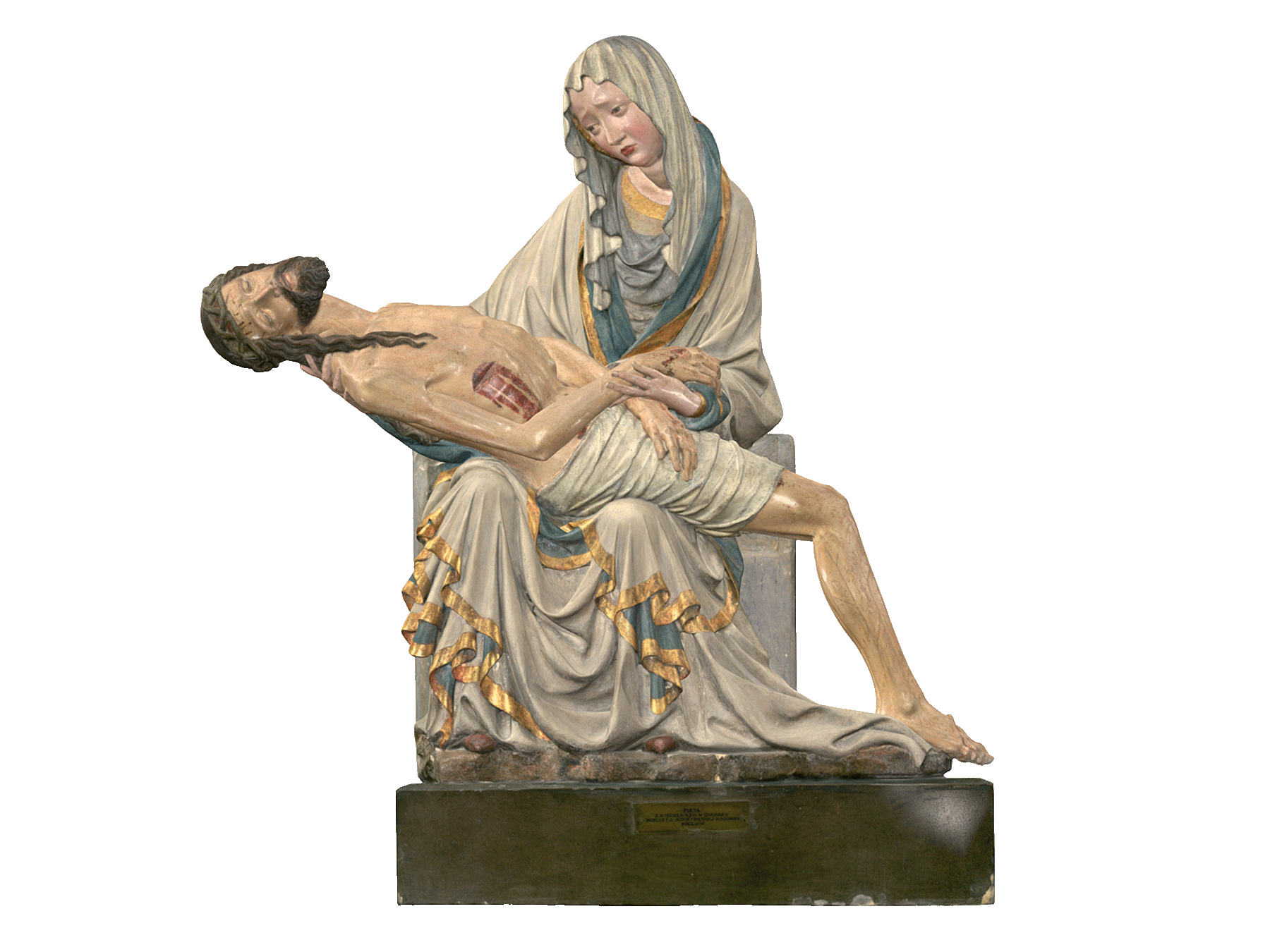The Silver High Altar of Bishop Andreas Jerin
The legendary silver high altar, one of the most valuable monuments of the late Renaissance in Poland. Valued at 10,000 thalers, the altarpiece was founded in 1590 by the Catholic Bishop Andreas von Jerin and made in Wroclaw by local Lutheran craftsmen under the direction of goldsmith Paul Nitsch. The price of the altarpiece was the equivalent of a medium-sized city when the order was placed for it. After its installation in the cathedral in 1591, it remained its main altar until the end of the Second World War and was one of the most frequently seen monuments in the city. Thus, the cathedral altar made by Lutheran artists became the pride of Silesia’s first Catholic church.
The altar was partially destroyed in 1632 by Swedish and Saxon troops when soldiers stole the silver plates from the back walls of the altar, damaging the chest and side wings in the process. The silver figures were not looted as they were hidden before the city was occupied. In 1650, the altarpiece was restored by order of the bishop’s nephew, Canon Philipp von Jerin, at which time the metal sheets were replaced with cloth decorated with silver stars and rosettes.
During the Second World War, during the operations in front of Festung Breslau, the altar was dismantled – the silver elements were deposited in the cathedral treasury and the painted wings were taken to one of the museum depots, then to a church in Szamotuły. It was not until 20 years later that they returned to Wroclaw. All of the preserved elements of the altarpiece were shown for the first time since 1944 in 2017 at the exhibition “Treasury. Goldsmithing of the Wroclaw Archcathedral’ presented at the National Museum in Wrocław.
In September 2018, an agreement for the reconstruction of the famous work was signed by Piotr Oszczanowski, director of the National Museum in Wroclaw, and Paweł Cembrowicz, parish priest of the Cathedral of Saint John the Baptist in Wroclaw. On 20 December 2019, the silver altarpiece of Bishop Jerin was returned to the Wroclaw Cathedral.
The Mannerist altarpiece is a pentaptych, consisting of a wooden altar cabinet, upholstered in maroon velvet decorated with silver stars. Against its background are silver figures of the crucified Jesus Christ, Mary and St John the Evangelist. In the recesses of the wings, also lined with maroon velvet and decorated with stars, are the silver figures of St Andrew the Apostle and St Jadwiga of Silesia (right wing) and St John the Baptist and St Vincent of Saragossa (left wing). In addition, below the saints are small silver medallions related to the founder: in the right wing his coat of arms and in the left wing a portrait in profile. The main cabinet and the recesses of the wings are framed by gilded openwork floral ornaments in silver. The open altarpiece is 376 cm wide and 301.5 cm high. The main wing is closed with four wings.
The silver altar figures of Jesus and Mary and the saints: St John the Baptist, St Vincent, St Andrew, St Jadwiga of Silesia and St John the Evangelist, as well as painted representations of scenes from the life of the cathedral’s patron saint St John the Baptist and images of the Church Fathers are among the finest works of late Renaissance art in Silesia. The free-standing silver and partly gilded statue of the Risen Christ (Salvator Mundi) by Caspar Pfister from 1625 is not only the most important surviving work by this outstanding artist, but also the most outstanding of the masterpieces of Wroclaw goldsmithery of the first half of the 17th century.
Gigapanoramas
Gigapixels
3D models
)
)
)
)
)
)
)
)
)